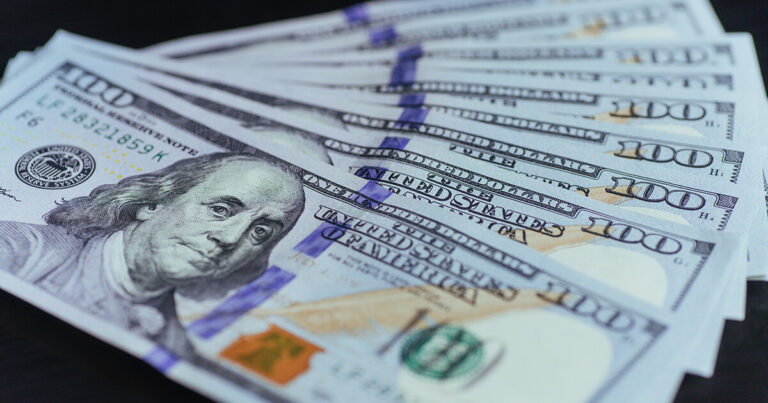
In this week’s currency trading and Intermarket analysis, safe-haven g7 currencies tumble as market sentiments turn risk on.
Driven by positive market sentiments, sterling and commodity-related currencies easily took the top spot. And on the receiving end, the yen and American dollar badly hit amidst treasury yields settling in range in response to central bank rhetoric.
The fundamentals That Drove The Market
Positive sentiments, economic data, monetary policy, geopolitics, and the US relief package fundamentals combined forces to drive the forex market.
Positive Sentiments
The continued reduction in coronavirus new cases globally and fiscal stimulus led to increased positive sentiments over the week. Furthermore, the vaccination programs and reduced hospitalization also boosted global sentiments.
In the week, President Joe Biden signed the $1.9 trillion COVID-19 relief bill into law fueling consumer spending.
Coronavirus News
While some economies continue to witness a decline in the covid 19 fresh cases and hospitalization, others like Brazil and Eurozone are still struggling under the impact of the continued spike of the infectious virus.
In the US, Biden promised to shorten vaccination programs by two months, aiming to inoculate all adults by May 1 this year. In the week, controversies around the AstraZeneca vaccine emerged.
First, it failed to meet its contractual supply agreement, and two, it was linked to severe side effects, specifically blood clots and some countries suspended it.
Crude Oil Trading

Bolstered by the continuing covid 19 vaccination rollouts and economic recovery, crude oil trading kicked off the week on a bullish run to a high of $70 before settling at $69.
Increased oil demand and OPEC’s production cut also contributed to the increased prices over the week.
10-Year Treasury Yield Gained 1.62%
The 10-year treasury yield oscillated over the week before picking a bullish momentum run on Friday, most likely in reaction to Biden’s $1.9T stimulus law. The upsurge in the treasury yields fuelled optimism of strong economic recovery and increased inflations.
Geopolitics
Trade tension between China and the US continues to simmer, affecting currency trading and Intermarket analysis. Biden’s government restricted China’s Huawei products in the US market.
Because of the tensions, the American dollar gained against other currencies on Friday. Australia-China tension was also witnessed in the week, negatively affecting commodity-linked assets.
Central Banks’ Sentiments
On the monetary policy front, most of the g7 central banks maintain their rates unchanged but promised to intervene to reign in the spiking Treasury bonds and inflations. Higher yields pose a threat to economic recovery efforts besides increasing borrowing costs.
Economic Data
Despite struggling under the weight of the covid 19 pandemics, many economies posted positive updates which supported their currencies.
G7 Economic Review And Performance
Table: performance summary….
| Currency pair | 8th March | 14th March | Average price | Percentage change | Remarks |
| USD | 92.334 | 91.678 | 91.844 | 0.339 | drop |
| GBP/USD | 1.3824 | 1.3922 | 1.3912 | 0.5852 | increase |
| EUR/USD | 1.1843 | 1.1952 | 1.1920 | 0.2937 | increase |
| USD/CHF | 0.9365 | 0.9297 | 0.9295 | 0.1289 | drop |
| USD/CAD | 1.2660 | 1.2471 | 1.2582 | 1.4540 | drop |
| USD/JPY | 108.86 | 109.00 | 108.64 | 0.61 | increase |
| AUD/USD | 0.7649 | 0.7765 | 0.7729 | 1.0278 | increase |
| NZD/USD | 0.7128 | 0.7174 | 0.7178 | 0.2095 | increase |
USD Back To The Red
In the week ending March 14, the greenback slid back to the red after two consecutive weekly gains. According to Investing.com, it lost 0.33%, closing at 91.679 following the previous week’s rally of 1.17%. Positive economic data, positive sentiment, and coronavirus news primarily drove the dollar’s performance.
Following increased global optimism on coronavirus vaccination rollout and containment measures easing, the dollar went down. According to this week’s usd currency trading and Intermarket analysis, inflation took center stage. The consumer price index increased by 0.4%, with the producer price index going up by 0.5%. Besides, the small business optimism index advanced to 95.8.
Fueled by covid 19 infection rate drop and expectations of more stimulus packages, weekly jobless claims dived to 712K from 754K and job openings up to 6.9M, the highest since the pandemic onset. Michigan’s University Preliminary consumer sentiment index rose to 63 from 58.3.
Because of the improved economic outlook, covid 19 vaccinations, and strong bond yields, market sentiments turned positive, driving the greenback safely to the red zone.
GBP/USD
While the dollar was weakening, the sterling pound rallied by 0.60%, reversing 0.68% of the previous week’s loss. Economic data, coronavirus news, and ECB monetary policy affected currency trading and Intermarket analysis of the cable currency.
Ravaged by another round of covid 19 recent cases and the containment measures, the UK economy took a hit, falling by 2.9% in January. In particular, the service sector reduced by 3.5%, and industrial production declined by 1.5%.
Nonetheless, the UK government made significant progress in its COVID-19 vaccination program. Along with household finances, the vaccination uplifted the sterling pound significantly over the week, besides trade data narrowed from 14.32 to 8.83 billion pounds, providing more support to the sterling pound.
EUR Vs USD Signal

Attributed to covid 19 pandemics, the Eurozone’s Q4 GDP shrunken slightly by 0.7%. But in particular, consumer spending and demand plummeted. Interpreting the eur vs USD signal, the European Central Bank flexed its muscles, indicating it will reign in on the spiking treasury yields.
As expected, ECB left the monetary policy unchanged but promised to increase the bond-buying program to control the increased borrowing costs. In the war against the covid 19 pandemics, AstraZeneca experienced delivery delays in the Eurozone. It showed that it could not meet the expected delivery of 90 million doses but could supply 30 million doses.
The drug’s integrity also came under sharp scrutiny amidst raising health side effects. By the end of the week, the euro increased by 0.32% to 1.1953, awakening from a previous loss of 1.32%.
CHF Currency To USD
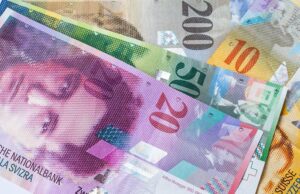
Swiss franc took a substantial beating over the week but gained slightly, 0.1289% against the dollar. The Swiss franc lost ground on the strengthening dollar, ECB sentiments, and covid 19 news.
Positive global sentiments emanating from the coronavirus vaccinations, spiking bond yields, reduced infections, and positive economic outlook worked significantly against chf currency to usd exchange rate.
Cad Dollar Stellar Performance For The Second Week
It was a bullish week for the Lonnie, rallying by 1.45% to 1.2475. previously the Canadian dollar had fallen by 0.60%.
On the economic front, positive data released on Friday uplifted Lonnie. The employment rate fell from 9.4% to 8.3%, following employment figures increasing by 212.8K. Because of the strong employment figures, the Lonnie soared against the greenback and other g7 currencies.
As expected, the Bank of Canada left the interest rates unchanged on the monetary policy front. While the monetary policy was dovish, Lonnie leveraged on increased oil prices and improved economic data from China.
JPY Currency News
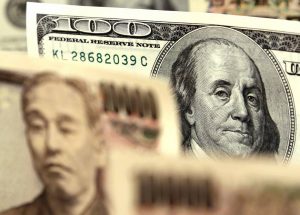
Jpy currency news shows the yen was severely damaged as business performance deteriorated in the first quarter. The manufacturing business index dropped from 21.6 to 1.6, with industrial business turning negative from 11.6 to -4.5.
Also, the non-manufacturing business index turned negative from 6.7 to – 7.4. And to make things worse for the yen, economists project a poor market outlook in the second quarter. As the global sentiment turned positive, forex traders abandoned the yen.
Although positive, Japan’s GDP increased by 2.8% but down from a 3.0% earlier projection. According to currency trading and Intermarket analysis, the yen dropped by 0.66% against the dollar. Previously, the yen had fallen by 1.69%.
AUD Currency Outlook
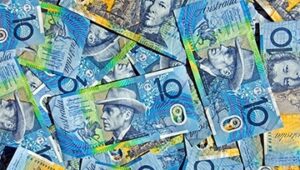
In a sustained economic recovery path, Australian employment records went up for the 4th month in a row, and contrary to expectations, Australia’s Q4 GDP spiked by 3.1%. And by the end of the week, the Aussie dollar grew by 1.01%, closing at 0.7764 against the greenback.
Positive economic data delivered the upsurge of the aud currency outlook. The business confidence index increased from 10.0 to 16.0, while the consumer sentiment index rose by 2.1%.
While the economic data were Aussie positive, China-Australia trade wars pressured the Australian dollar. China slapped massive tariffs on Australian products, mainly barley and wine.
US To NZ Dollar
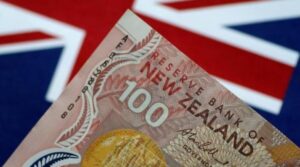
On the economic front, the manufacturing index dropped drastically to 53.4 from 58.0. Employment dropped from 56.1 to 49.8, while new orders slumped from 62.8 to 56.2 and production down to 57.3 from 59.3.
Other fundamentals affecting us to NZ dollar currency trading and Intermarket analysis include economic updates, coronavirus news, and positive global sentiments.
On the economic front, retail sales dropped by 2.5%, with business PMI falling from 57.5 to 53.4. The New Zealand dollar weighed heavily by the insufficient financial data closed the week slightly up by 0.13% to 0.7176.
Conclusion
Positive sentiments over the week led to the poor performance of the safe-haven currencies. Despite lacking positive economic data in Australian dollar and sterling pound currency trading and Intermarket analysis, the two currencies emerged as top performers mainly boosted by risk-on mood and central bank comments.
Must Read: Currency Trading News Analysis from 1st to 7th March 2021



